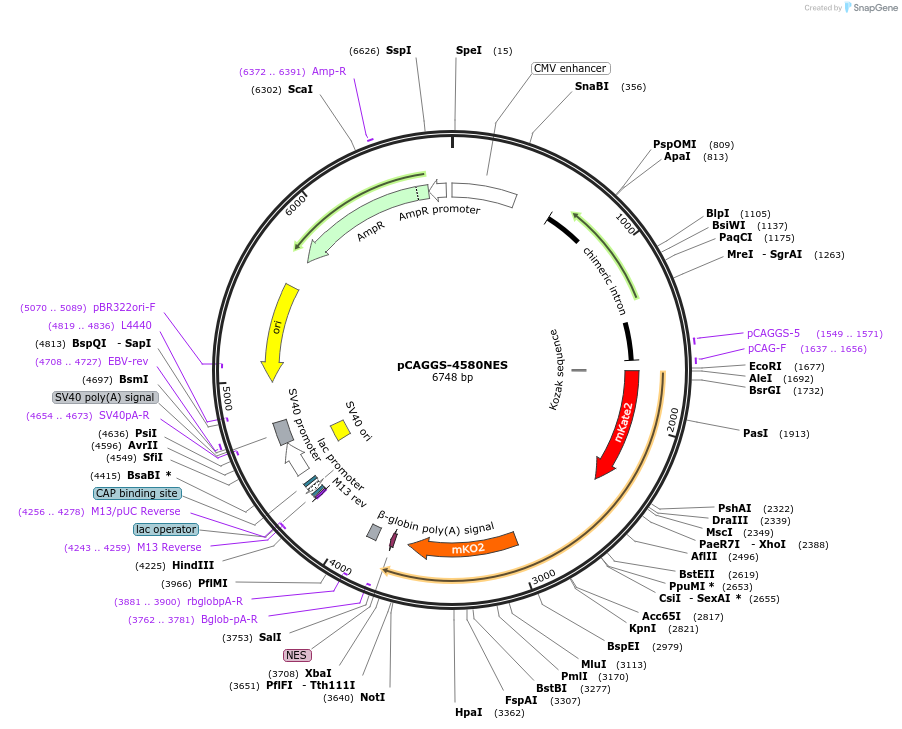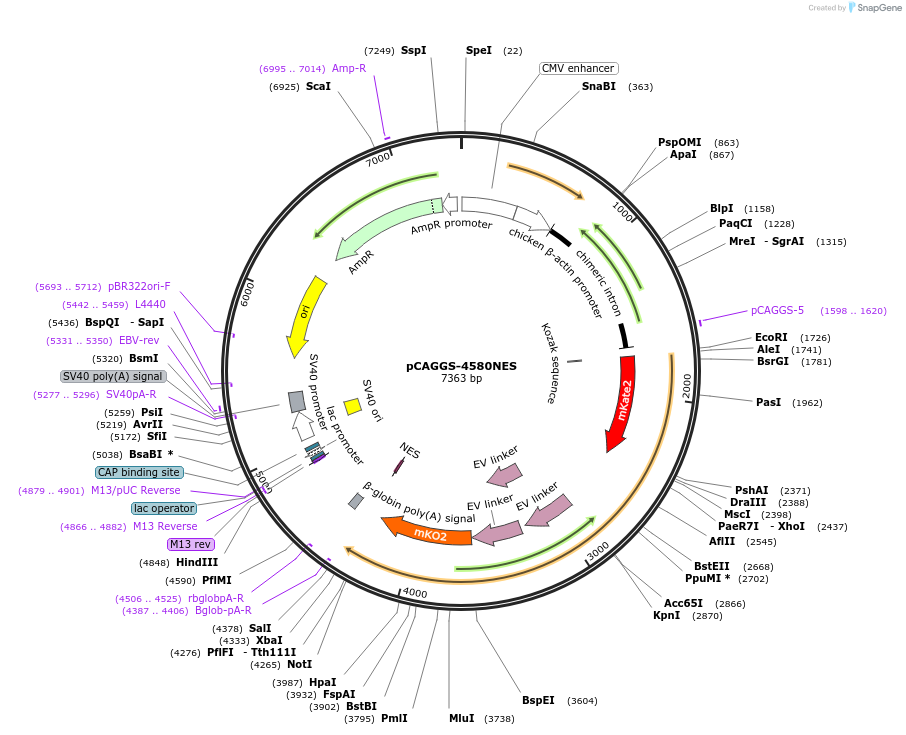pCAGGS-4580NES
(Plasmid
#138376)
-
PurposeBooster-JNK, a Red-Shifted Genetically Encoded FRET Biosensor for JNK activity.
-
Depositing Lab
-
Sequence Information
Ordering
| Item | Catalog # | Description | Quantity | Price (USD) | |
|---|---|---|---|---|---|
| Plasmid | 138376 | Standard format: Plasmid sent in bacteria as agar stab | 1 | $89 | |
Backbone
-
Vector backbonepCAGGS
- Backbone size w/o insert (bp) 4700
- Total vector size (bp) 7563
-
Vector typeMammalian Expression
Growth in Bacteria
-
Bacterial Resistance(s)Ampicillin, 100 μg/mL
-
Growth Temperature37°C
-
Growth Strain(s)DH5alpha
-
Copy numberUnknown
Gene/Insert
-
Gene/Insert nameBooster-JNK
-
SpeciesS. cerevisiae (budding yeast), Synthetic
-
Insert Size (bp)2600
- Promoter CAG
Cloning Information
- Cloning method Gateway Cloning
- 5′ sequencing primer pCAGGS-5
- (Common Sequencing Primers)
Terms and Licenses
-
Academic/Nonprofit Terms
-
Industry Terms
- Not Available to Industry
Trademarks:
- Zeocin® is an InvivoGen trademark.
Depositor Comments
Sequences are based on next-generation sequencing (NGS) results where indicated (Addgene NGS Result), or assembled from reference sequences and/or Sanger results (Addgene Assembled Sequence). Sequence provided by depositing laboratory may be theoretical/predicted or based on Sanger/NGS sequencing results. Discrepancies between sequencing results obtained by Addgene and the original sequence provided by the depositor may be present.
These plasmids were created by your colleagues. Please acknowledge the Principal Investigator, cite the article in which the plasmids were described, and include Addgene in the Materials and Methods of your future publications.
-
For your Materials & Methods section:
pCAGGS-4580NES was a gift from Michiyuki Matsuda (Addgene plasmid # 138376 ; http://n2t.net/addgene:138376 ; RRID:Addgene_138376) -
For your References section:
Booster, a Red-Shifted Genetically Encoded Forster Resonance Energy Transfer (FRET) Biosensor Compatible with Cyan Fluorescent Protein/Yellow Fluorescent Protein-Based FRET Biosensors and Blue Light-Responsive Optogenetic Tools. Watabe T, Terai K, Sumiyama K, Matsuda M. ACS Sens. 2020 Feb 26. doi: 10.1021/acssensors.9b01941. 10.1021/acssensors.9b01941 PubMed 32101394




